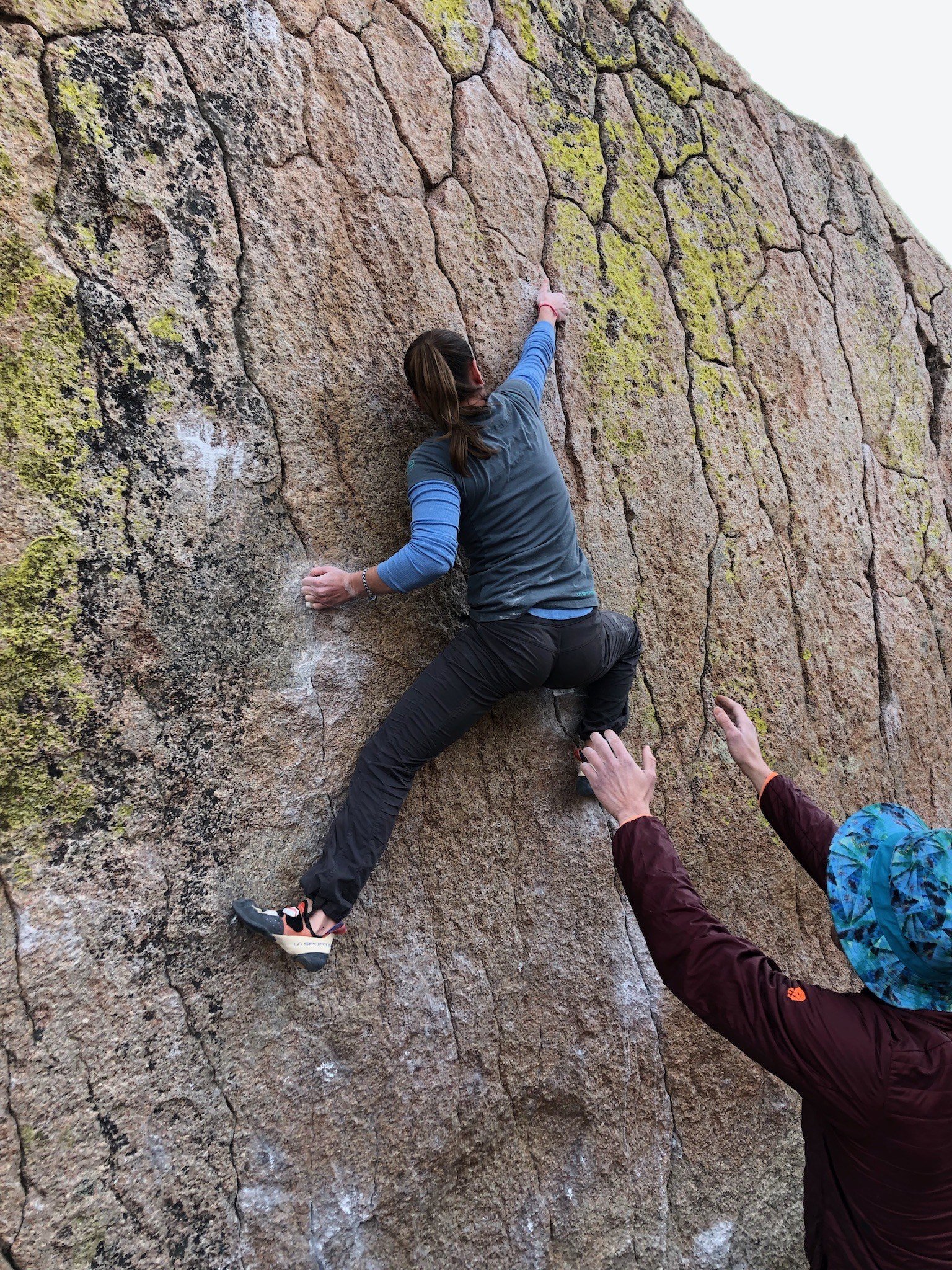Resources for Rock Climbing
The reality is that there isn’t a lot of research or widely available guidance on climbing during pregnancy. Many people are simply told to stop climbing, with no real explanation as to why.
Jędrzej at Strength Climbing reached out with feedback on my training methods on one of his athletes.
Learn about why we should focus on muscular adaptations during our training rather than connective tissue ones. And how intention is the key to strength gains instead of absolute numbers.
Learn how to build climbing endurance for bouldering, sport climbing, and multi-pitch climbing.
Doing nothing for a warm up is like taking a road trip on a quarter tank of gas…and too much intensity for a warm up may leave you overly fatigued before the fun even happens!
The menstrual cycle is a highly individualized experience, and gaining insight into its phases can provide individual athletes with tools to improve their training, recovery, and overall performance.
As coaches, we need to help our athletes learn to focus on the right thing, at the right time. There is a time to prepare, a time to reflect and a time to perform.
Learn why climbers should train differently than weight lifters, programming ideas, common mistakes, and more.
When training finger strength off the wall, the goal is to improve muscle size, recruitment, and connective tissue stiffness. To do this effectively, it’s essential to understand an athlete's current peak force, often referred to as their one-rep max (1RM).
One of the most enduring questions in sports performance is this: How do we get our strength training adaptations to transfer to our sport?
While finger strength often gets the spotlight, the ability to generate quick, high force through your hands, or contact strength, is what can make the difference in your climbing
As a coach and climber, I’ve spent years exploring and refining the best approaches to training finger strength.
As a climber and coach, I've spent countless hours talking with athletes about finger strength training.
Incorporating BFR into your routine can be as simple as doing one or two sessions a week during a training cycle.
Understanding the difference between active recruitment and passive tension in finger training has the potential to unlock new levels of performance, especially for climbers who feel they've plateaued.
Whether you’re pushing V14s or working through your first 5.10, training smarter is often the key to unlocking better performance, not necessarily training harder.
Discussing different conditions concerning the elbow which you might encounter as a climber.
Finger morphology, the frame work for how climbers should understand strength training, why training on an unlevel edge could be useful, what a talon grip is, and a paradox we all run into when starting to strength train.
Top tips and pitfalls for how to climb on a training board, such as a Tension Board, Moonboard, Kilter Board, Grasshopper Board.
How to foster growth mindset vs fixed mindset, dealing with emotional regulation in teens, and more.
Strength training will increase power through recruitment gains for athletes with less training experience, particularly youth athletes. But thoroughly trained or more advanced athletes likely need a more nuanced approach with distinct phases.
Climbers do a lot of random exercises in hopes of getting more power. But the most effective thing they can do is adjust how they lift weights.
While I won’t argue that the hangboard is an invaluable climbing training tool, our assumptions about how to use it, including that you should train in a full crimp or that hangs need to last for a certain duration (think 10-second max hangs), can be limiting.
You've likely heard that fingerboard training is good for advanced climbers and dangerous for beginners. In my experience testing and tracking professional climbers for many years, I’ve realized that this narrative is unsubstantiated. (Part 1/2)
Podcasts With More Info
Learn about why we should focus on muscular adaptations during our training rather than connective tissue ones. And how intention is the key to strength gains instead of absolute numbers.
Learn how to build climbing endurance for bouldering, sport climbing, and multi-pitch climbing.
Learn why climbers should train differently than weight lifters, programming ideas, common mistakes, and more.
Discussing different conditions concerning the elbow which you might encounter as a climber.
Finger morphology, the frame work for how climbers should understand strength training, why training on an unlevel edge could be useful, what a talon grip is, and a paradox we all run into when starting to strength train.
Top tips and pitfalls for how to climb on a training board, such as a Tension Board, Moonboard, Kilter Board, Grasshopper Board.
How to foster growth mindset vs fixed mindset, dealing with emotional regulation in teens, and more.
Strength Training for Older Athletes, Contrarian Advice on Managing Injuries , What is 'Good Pain, and Poor Habits Outdoor Athletes Should Discard
This episode covers fast fingers vs. strong fingers, injury prevention and rehab, how to know when you're approaching junk mileage and common plateaus and how to break through.
What are climbers currently doing that concerns him injury-wise, and how can they prevent / improve this? What is the future for the use of training and assessment, and the tools/gadgets/apps related to it?
In this episode, Tyler and Clayton cover training, injuries, principles and more. It’s helpful info for everyone, not just climbers!
This episode covers blood flow restriction training (BFR) and how it can be used for injury rehab, active recovery, or getting stronger. Tyler also discusses finger training and why most hangboard protocols are more similar than different.
In this episode, Tyler and Kris discuss how to look at the research, whether science is the end all be all, and what exactly is the context for all of this information.
The Camp 4 Performance Podcast
Find it on Spotify or Apple Podcasts.





